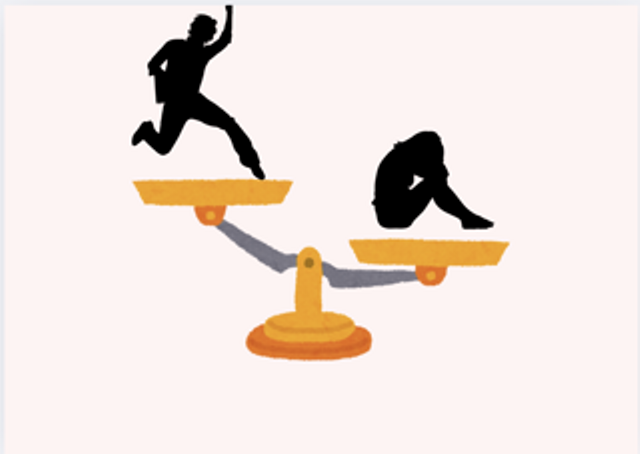Tentang KamiPedoman Media SiberKetentuan & Kebijakan PrivasiPanduan KomunitasPeringkat PenulisCara Menulis di kumparanInformasi Kerja SamaBantuanIklanKarir
2025 © PT Dynamo Media Network
Version 1.101.0
Konten dari Pengguna
Gender Inequality Across Education, Workplaces, and Cultural Norms
8 Desember 2024 16:41 WIB
·
waktu baca 4 menitTulisan dari Lowqihao 0057 tidak mewakili pandangan dari redaksi kumparan
ADVERTISEMENT
Gender inequality continues to be a pervasive issue globally, despite growing awareness of gender equality and efforts to address it. While progress has been made in promoting the rights of women and ensuring they have equal access to opportunities, there is still a long way to go. In many societies, gender inequality remains deeply embedded in cultural norms, economic systems, and social practices, creating barriers to women’s full participation in various aspects of life. From education to the workplace and everyday societal interactions, women face challenges that hinder their personal and professional development. Although movements advocating for gender equality are gaining momentum, achieving true equality requires systemic change and a collective effort to dismantle the longstanding barriers that limit women’s potential.

One of the most prominent areas where gender inequality is visible is education. In many low-income countries, poverty is a major determinant of whether girls can access and complete their education. Women from poor households, particularly in countries like Pakistan and Afghanistan, often have little to no chance of completing primary education. The situation is compounded by factors such as domestic responsibilities, early marriage, and a lack of sanitation facilities in schools, all of which contribute to higher dropout rates for girls compared to boys. A striking example is Afghanistan, where the Taliban’s policies bar girls from attending school beyond sixth grade, severely limiting their educational opportunities. Gender inequality in education perpetuates cycles of poverty, as girls without education are less likely to gain employment and achieve economic independence. In contrast, countries like Indonesia and Malaysia have made strides toward gender equality by providing equal access to education for both men and women, demonstrating that education is a critical factor in achieving gender equality.
ADVERTISEMENT
In the workplace, gender inequality is evident through disparities in leadership representation, hiring practices, and societal expectations. Women remain underrepresented in executive roles, holding only 10% of executive board positions globally and just 8.2% of CEO positions in Fortune 500 companies as of 2023. The “glass ceiling” remains a significant barrier, reflecting an underlying bias that views men as more suitable for leadership roles. Women also face discrimination in hiring, with studies showing that resumes with female names are less likely to be selected for interviews than those with male names, even when qualifications are identical. Cultural expectations that women should prioritize family responsibilities over their careers further exacerbate these challenges, reinforcing the notion that women are less committed to their professional lives. To address gender inequality in the workplace, companies and organizations must promote equal opportunities, challenge biases in recruitment and leadership, and support policies that allow both men and women to balance family and professional responsibilities.
Cultural norms and stereotypes are deeply ingrained in society and play a powerful role in perpetuating gender inequality. From a young age, boys and girls are socialized into traditional gender roles, with boys often encouraged to be ambitious and pursue leadership positions, while girls are steered toward caregiving professions. These stereotypes limit women’s participation in fields like science, technology, engineering, and mathematics (STEM), where they are significantly underrepresented. In the workplace, these cultural norms persist, with women frequently perceived as less suitable for leadership roles because they are seen as lacking assertiveness or decisiveness. At home, women are often expected to shoulder the bulk of caregiving and household responsibilities, further limiting their ability to advance in their careers. Challenging these cultural norms and promoting more inclusive representations of gender roles are essential steps toward breaking down the barriers that sustain gender inequality.
ADVERTISEMENT
Despite the progress made in some areas, the journey toward achieving gender equality is far from complete. Addressing gender inequality requires more than just policy changes; it demands a shift in societal attitudes and norms. Investment in education, particularly for girls in developing countries, is critical for breaking the cycle of poverty and empowering women to contribute fully to society. In the workplace, companies must prioritize gender diversity in leadership roles and create environments where both men and women can thrive. Finally, societal norms that limit women’s potential must be actively challenged to create a future where both genders have equal opportunities to succeed.
In conclusion, gender inequality remains a pervasive issue across education, the workplace, and cultural norms. While awareness of gender equality is increasing, deeply entrenched biases and systemic barriers continue to limit women’s opportunities and participation in many aspects of life. Achieving true gender equality requires a comprehensive, collective effort that includes policy changes, investment in education, workplace reforms, and the dismantling of cultural norms that perpetuate inequality. Only by addressing these challenges can we create a more inclusive and equitable society for all.
ADVERTISEMENT

